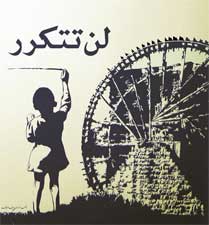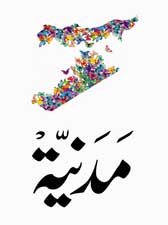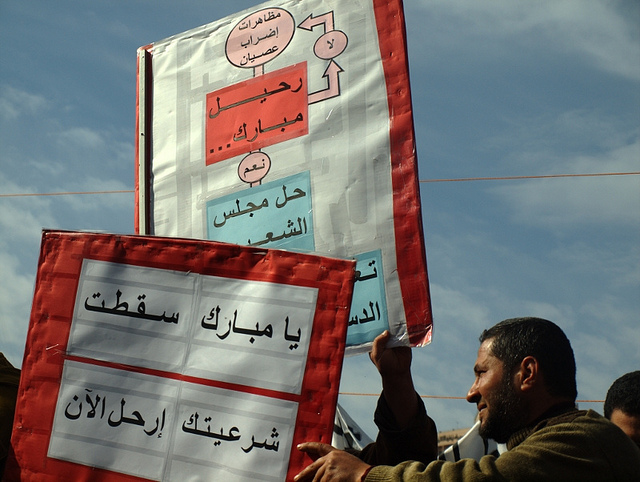arab spring
Libya Ink
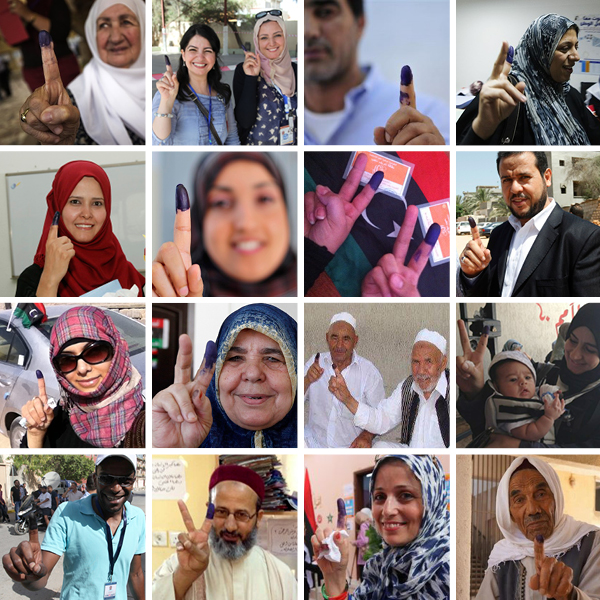
It’s amazing waking up in Brooklyn to see the euphoric tweets and pictures coming out of Libya as people vote in their first free election for more than 50 years.
A few recent picks:
I now feel that the 70 days I spent in prison didn't go to waste #LYelect #ليبيا #تنتخب
One young man at station said he didny sleep all night, can't wait to vote, been at stn since 5am! #Libya #LYElect #Benghazi
93y old lady voting for first time in her life #Gheryan #LyElect #Libya pic.twitter.com/3QyyMVwg
You wouldn't know it, but this man told me after his vote "inside I feel like I am flying" pic.twitter.com/mKk2Sfn4
The purple is election ink, a semi-permanent dye applied to voters’ fingers to prevent double voting. Those inky fingers are something special today.
Tahrir, Revolution, and Design
Stunning photos today of the millions of Egyptians out in the streets to commemorate the start of the revolution a year ago that turned out Mubarak — and to demand transition from military to civilian rule.
A few things have been written on the supporting role of design in the revolution and the urban landscape as both site and medium of protest:
- The role
of protest signage
- Graffiti and murals
- Planning, public squares and cities as tools of rebellion
- Flyers, manifestos and ephemera
- Cellphone cameras and social media
- Even product labeling.
But I think my favorite detail is in this annotated overview of Tahrir square by BBC News.
The authors of direct action (particularly in West Asia and North Africa) are often depicted as a rowdy mob of thugs. But instead of the usual sea of angry Arab men so often shown by the mainstream media, the photo shows a kindergarten set up in the square. Schools in Cairo had been closed during the protests, but many mothers wanted to attend the demonstration as well. So demonstrators organized an impromptu kindergarten.
The image captures the spirit of mutual support that sprang up around the occupation. And my favorite detail: the newsprint under the paintings to keep the square, the city and country they love, free from spills. No random acts of violence here, but using the city to create something new, a different future, with hope and love.

Keep Calm and Carry On

New Year’s card from Réne Wolf, January 2011 (via)
 ”The US has sent Bahrain dozens of ‘excess’ American tanks, armored personnel carriers, and helicopter gunships. The US has also given the Bahrain Defense Force thousands of .38 caliber pistols and millions of rounds of ammunition, from large-caliber cannon shells to bullets for handguns. To take one example, the US supplied Bahrain with enough .50 caliber rounds—used in sniper rifles and machine guns—to kill every Bahraini in the kingdom four times over.“ Previously: tear gas in Egypt.
”The US has sent Bahrain dozens of ‘excess’ American tanks, armored personnel carriers, and helicopter gunships. The US has also given the Bahrain Defense Force thousands of .38 caliber pistols and millions of rounds of ammunition, from large-caliber cannon shells to bullets for handguns. To take one example, the US supplied Bahrain with enough .50 caliber rounds—used in sniper rifles and machine guns—to kill every Bahraini in the kingdom four times over.“ Previously: tear gas in Egypt.
Those Other Egyptian Protests
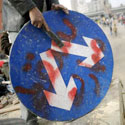
Over at Counterpunch, Esam Al-Amin breaks down key moments in the Egyptian revolution including this wonderful tactic: publicizing fictional protests while the real one(s) assembled:
“Since at least 2004, Egypt has witnessed many protests... In every case, the demonstrators were outnumbered by the security forces, which brutally cracked down on them, causing numerous injuries and arrests.
But the Tunisian revolution changed that equation in several ways. First, it inspired Egyptians beyond the activists or elites. Secondly, once the youth organizers decided to take to the streets on January 25, they outsmarted the security forces.
As a ruse, the youth released announcements for people to gather at certain landmarks and intersections knowing full well that massive security forces would be awaiting them there. Instead, they went in small groups to side streets in poor and middle class neighborhoods with no government agent presence to mobilize these areas to join the protests.
[One of the organizers recounts:] ‘I went to a street in Bulaq Dakrur (one of the poorest neighborhoods in Cairo), where I and a group of members from the movement intended to start protesting. At the same time, other members were doing the same thing in other areas. When we had assembled, we raised the Egyptian flag and began to chant slogans, and it was surprising when a large number of people joined us. This prompted us to take our demonstration down Gamat al-Dawal al-Arabia Street (main street). With increasing numbers joining us, we stopped for some time in front of Mustafa Mahmoud Mosque (major landmark), and then we led the march to Tahrir Square. We found several demonstrations coming from different areas towards this area, and thus we decided to occupy Tahrir Square.’
To the complete surprise of the security forces, the demonstrators reached Tahrir Square numbering over one hundred thousand, which they could neither control nor disperse. Despite the existence of thousands of security forces, this was a new situation that they had not experienced before.”
Google Earth and the Middle East
Ogle Earth runs down a brief list of ways Google Earth and the availability of satellite imagery in recent years have fueled class resentment and conflict in Bahrain, Iran, Iraq, Israel, Saudi Arabia, Sudan, Syria, Tunisia, and Yemen.
Leading the list are dramatic visualizations comparing the overcrowded living conditions of the Shiite majority in Bahrain with the palaces, estates, and private islands of the ruling families. After the country’s ISPs were ordered to block access to Google Earth’s imagery in 2006, this PDF of annotated screencaps illustrating the spatial inequities circulated widely by email.
Egypt Infographics
A protester breaks down the algorithm: “Mubarak leaves. Yes: Parliament dissolves. No: Protests, disobedience. strikes.”
One of the Creative Commons photos posted to the Flickr stream of Al Jazeera English.
page 2 1


